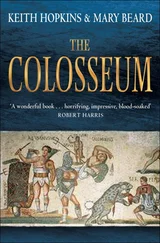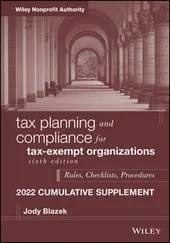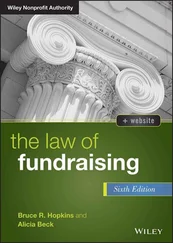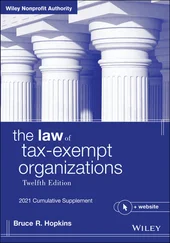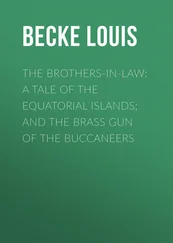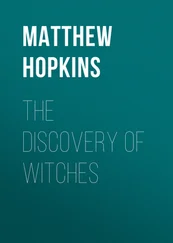Bruce R. Hopkins - The Law of Tax-Exempt Healthcare Organizations
Здесь есть возможность читать онлайн «Bruce R. Hopkins - The Law of Tax-Exempt Healthcare Organizations» — ознакомительный отрывок электронной книги совершенно бесплатно, а после прочтения отрывка купить полную версию. В некоторых случаях можно слушать аудио, скачать через торрент в формате fb2 и присутствует краткое содержание. Жанр: unrecognised, на английском языке. Описание произведения, (предисловие) а так же отзывы посетителей доступны на портале библиотеки ЛибКат.
- Название:The Law of Tax-Exempt Healthcare Organizations
- Автор:
- Жанр:
- Год:неизвестен
- ISBN:нет данных
- Рейтинг книги:4 / 5. Голосов: 1
-
Избранное:Добавить в избранное
- Отзывы:
-
Ваша оценка:
- 80
- 1
- 2
- 3
- 4
- 5
The Law of Tax-Exempt Healthcare Organizations: краткое содержание, описание и аннотация
Предлагаем к чтению аннотацию, описание, краткое содержание или предисловие (зависит от того, что написал сам автор книги «The Law of Tax-Exempt Healthcare Organizations»). Если вы не нашли необходимую информацию о книге — напишите в комментариях, мы постараемся отыскать её.
The Law of Tax-Exempt Healthcare Organizations — читать онлайн ознакомительный отрывок
Ниже представлен текст книги, разбитый по страницам. Система сохранения места последней прочитанной страницы, позволяет с удобством читать онлайн бесплатно книгу «The Law of Tax-Exempt Healthcare Organizations», без необходимости каждый раз заново искать на чём Вы остановились. Поставьте закладку, и сможете в любой момент перейти на страницу, на которой закончили чтение.
Интервал:
Закладка:
7 197.7 Priv. Ltr. Rul. 201039046.
8 197.8 Priv. Ltr. Rul. 201121021.
9 197.9 Priv. Ltr. Rul. 201523022.
10 219.1 Priv. Ltr. Rul. 201452018.
11 219.2 Priv. Ltr. Rul. 201510059.
12 219.3 Priv. Ltr. Rul. 201511024. See § 18.1, text accompanied by note 51.5.
13 222.1 Priv. Ltr. Rul. 201641027.
14 222.2 See § 3.3.
15 225.1 Priv. Ltr. Rul. 201442066.
16 225.2 Priv. Ltr. Rul. 201440023.
17 360.1 See the text accompanied by supra notes 298–307.
18 360.2 Tech. Adv. Mem. 201503019.
19 360.3 Priv. Ltr. Rul. 201906012.
20 360.4 Priv. Ltr. Rul. 201336020.
CHAPTER FIVE Public Charities and Private Foundations
§ 5.1 Public Institutions
§ 5.6 Recognition of Change in Public Charity Status
§ 5.1 PUBLIC INSTITUTIONS
p. 139, first complete paragraph, fifth line. Insert following footnote number:
agricultural research organizations; 17.1
p. 139. Insert following first complete paragraph, before heading:
Qualification for the status of these types of public institutions has historically (for decades) hinged on a primary purpose test, with one exception, namely, the categories of healthcare provider and medical research organizations, 18.1 this test is stated in the tax regulations, rather than in the statute. For example, the tax regulations provide that, for an entity to qualify as a school (including a college or university), it must have as its primary function the presentation of formal instruction. 18.2 The regulations also provide that an organization may not achieve status as a tax‐exempt operating institution where it is engaged in both educational and non‐educational activities, unless the latter activities are merely incidental to the former. 18.3
A court, however, upended the foregoing requirements for qualification as an educational institution (and most other categories of public institutions), holding that the primary‐function test and the merely‐incidental test, as a matter of statutory construction, “exceed the bounds of authority” provided by the statute and thus are unlawful. 18.4 The court based this finding on its conclusion that Congress “unambiguously chose not to include a primary‐function requirement in” the statutory definition of educational organization . 18.5 That conclusion was, in turn, based on the fact that the “equivalent of that very requirement” 18.6 appears in the tax law concerning public charity hospitals. 18.7 The heart of this part of the analysis is the statutory construction rule that, in determining whether statutory language is plain and unambiguous, a court must read all parts of the statute together and give full effect to each part. 18.8 The court might have come to a different decision if it applied another construction rule, which is that the judicial interpreter is to consider the entire text, in view of its structure and of the physical and logical relation of its many parts. 18.9 The problem is that this decision interprets the law of public charities in a way that enables an entity to qualify as a public charity by simply tangentially qualifying. 18.10
§ 5.6 RECOGNITION OF CHANGE IN PUBLIC CHARITY STATUS
p. 172, first complete paragraph, first line. Delete or ruling.
p. 172, first complete paragraph. Delete last sentence and insert:
This type of determination letter is requested by filing Form 8940. 242
p. 174, note 241. Delete 2013‐10, 2013‐2 I.R.B. 267 and insert:
2019‐5, 2019‐1 I.R.B. 230 § 7.04(1).
p. 174, note 242. Delete 2013‐4, 2013‐1 I.R.B. 126 and insert:
Id . § 4.02(1), (2).
NOTES
1 17.1 IRC §§ 170(b)(1)(A)(ix), 509(a)(1).
2 18.1 See §§ 5.1(a), (b).
3 18.2 Reg. § 1.170A‐9(b).
4 18.3 Id. For example, the IRS denied status as an educational entity in the case of an organization the primary function of which was not the presentation of formal instruction but was operation of a museum (Rev. Rul. 76‐167, 1976‐1 C.B. 329).
5 18.4 Mayo Clinic v. United States, 412 F. Supp. 3d 1038, 1047 (D. Minn. 2019).
6 18.5 Id.
7 18.6 Id.
8 18.7 See § 5.1(a).
9 18.8 This is one of the contextual canons used in construing statutes; it is a presumption of consistent usage. See Scalia & Garner, Reading Law: The Interpretation of Legal Texts 170 (Thomson/West, St. Paul, MN, 2012).
10 18.9 This is the whole‐text canon (Reading Law, supra, note 18.8, at 1167). In this case, the court did not read “all parts of the statute together”; it read only two sections of it (IRC §§ 170(b)(1)(A)(ii) and (iii)). The entire statute is IRC § 170(b)(1)(A), where the law provides for nine categories of public charities, eight of which do not contain the primary‐function requirement. It is probable that the statute writers had a reason to insert the requirement only in IRC § 170(b)(1)(A)(iii), a point the court did not explore.
11 18.10 The IRS calculated that the Mayo Clinic's educational activities were only 13 percent of its total activities and that its revenue from educational undertakings was only 6 percent of total revenue (Tech. Adv. Mem. 201407024). The court in this case may have violated another contextual canon: the absurdity doctrine. This canon states that a provision may be judicially corrected where the failure to do so would result in a disposition that no reasonable person could approve (Reading Law, supra, note 18.8, at 234). Indeed, another contextual canon the court could have applied is the harmonious‐reading canon, pursuant to which the provisions of a text should be interpreted in a way that renders them compatible, not contradictory (id., at 180). This decision is on appeal.
12 242 Id. at § 4.02(6).
CHAPTER SEVEN Lobbying and Political Activities
§ 7.1 Legislative Activities Limitation(b) Legislative Activities
§ 7.4 Political Activities Limitation(b) Participation or Intervention (g) IRS's Recent Enforcement Efforts (h) “Religious Liberty” Executive Order
§ 7.5 Business Expense Deduction Rules and Political Activities
§ 7.7 Public Policy Advocacy Activities
*§ 7.8 Political Activities of Social Welfare Organizations
§ 7.1 LEGISLATIVE ACTIVITIES LIMITATION
(b) Legislative Activities
p. 196, note 26, seventh line. Delete the period; insert following closing quotation mark:
(at 760, note 9).
p. 196, note 26. Delete text following the first period and insert:
Id .
p. 196, note 26. Insert as second paragraph:
An organization formed to protect the human rights of “defenseless victims” from various forms of mind‐control attacks was denied recognition of exemption as a charitable entity primarily because one of its principal activities was advocation of legislation to prohibit or regulate use of attack weapons on the public (Priv. Ltr. Rul. 201430014).
p. 196. Insert as fourth complete paragraph:
Another way an organization can be classified as an action organization is where its purposes can be achieved only through enactment of legislation. For example, the IRS held that an organization formed to promote transparency in government through technology failed to qualify for tax exemption as a charitable entity because its primary activity is advocating adoption of a theory or doctrine that can become effective only by a legislative enactment. 26.1 Likewise, an organization was denied recognition as an exempt charitable entity on the ground it is an action organization, inasmuch as its primary activity, which is obtaining statehood for a “political unit,” can only be attained by the enactment of legislation. 26.2
Читать дальшеИнтервал:
Закладка:
Похожие книги на «The Law of Tax-Exempt Healthcare Organizations»
Представляем Вашему вниманию похожие книги на «The Law of Tax-Exempt Healthcare Organizations» списком для выбора. Мы отобрали схожую по названию и смыслу литературу в надежде предоставить читателям больше вариантов отыскать новые, интересные, ещё непрочитанные произведения.
Обсуждение, отзывы о книге «The Law of Tax-Exempt Healthcare Organizations» и просто собственные мнения читателей. Оставьте ваши комментарии, напишите, что Вы думаете о произведении, его смысле или главных героях. Укажите что конкретно понравилось, а что нет, и почему Вы так считаете.


